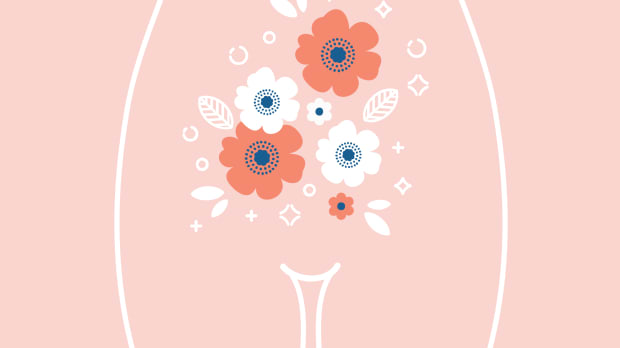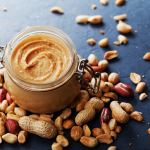- Like
- SHARE
- Digg
- Del
- Tumblr
- VKontakte
- Flattr
- Buffer
- Love This
- Save
- Odnoklassniki
- Meneame
- Blogger
- Amazon
- Yahoo Mail
- Gmail
- AOL
- Newsvine
- HackerNews
- Evernote
- MySpace
- Mail.ru
- Viadeo
- Line
- Comments
- Yummly
- SMS
- Viber
- Telegram
- JOIN
- Skype
- Facebook Messenger
- Kakao
- LiveJournal
- Yammer
- Edgar
- Fintel
- Mix
- Instapaper
- Copy Link
When it comes to all things menstrual cycle-related, medical professionals often tell us that our symptoms—moodiness, brain fog, fatigue, fertility struggles, and low libido—are normal, or are a natural response to getting older. Nothing to worry about.
One of the biggest myths perpetrated on women today is that our menstrual issues are not fixable. They are. Each month, your body tries to tell you something about your health. PMS, a heavy period, no period—whatever you’re experiencing isn’t the result of your body randomly rebelling against you. Rather, these issues are your body’s way of communicating with you—your period problems are a sign of your body needing attention. Your body is always working for you, not against you.
Feed Your Hormones
The foods we eat play a big role in how our hormones behave. In fact, the number one cause of hormonal imbalances, period problems, and fertility issues is a lack of the right nutrients in our diets. If you don’t have the nutrients you need to produce hormones properly or the understanding of how different foods affect your body, you won’t have a sturdy enough foundation to build on.
It’s important to understand that a one-size-fits-all approach to food is not possible. That’s why I’ve incorporated various elements from a couple of different dietary theories to create the Fix Your Period way of eating and living.
Carbohydrates
Not all carbs are created equal. I can’t stress enough that the best choices in carbohydrates are those found in whole foods. Simple or refined carbs such as white sugar, white flour, and the products made from them, such as pasta and baked goods, are typically the worst-quality carbs to consume. On the other end of the spectrum, vegetables are the shining star of the carbohydrate world.
Leafy Greens
Leafy greens are the most nutrient-dense foods on the planet, yet are totally underrated—and missing from most people’s daily diet. It’s time to up-level your greens intake.
There are many different types of leafy greens, and each of them contains an array of nutrients that not only impact your overall health but also have a pretty profound effect on the health of your reproductive organs—and all are essential for optimal hormone production and regulation:
- Arugula
- Beet greens
- Broccoli rabe
- Collard greens
- Dandelion greens
- Kale
- Mustard greens
- Red/green leaf lettuce
- Romaine lettuce
- Spinach
- Swiss chard
Just as the rainforest cleans the air, the abundance of nutrients found in leafy greens (chlorophyll in particular) helps remove potentially harmful toxins from your blood, makes new red blood cells, improves circulation, strengthens the immune system, and reduces inflammation. Indeed, when it comes to period problems, the nutrients in greens are gold:
Calcium. This mineral can be a big help in reducing PMS symptoms such as anxiety, depression, fatigue, and pain. In fact, low levels of calcium in the luteal phase have been found to cause or worsen PMS. Estrogen supports intestinal absorption of calcium, so having sufficient estrogen in your body is necessary for the integrity of your bones.
It’s crucial for women with amenorrhea or low estrogen to make sure they are getting adequate calcium through food and possibly supplementation.
Magnesium. This essential mineral has been shown to reduce bloating and breast tenderness and also helps to build progesterone. It reduces PMS-related anxiety and sleeplessness and works amazingly well for period pain and migraines.
Iron. This contributes to healthy egg production, stable energy levels, and healthy menstrual blood flow. (Hint: too-heavy or too-light periods can be a sign of insufficient iron levels.)
Potassium. This powerhouse mineral and electrolyte allows your body to make energy from the foods you eat, reduce bloat, and relieve menstrual cramps.
Vitamin A. This vitamin helps maintain healthy, acne-free skin and may even help reduce heavy periods.
Folate. Vitamin B9, or folate, acts as a mild antidepressant by indirectly helping to produce serotonin and dopamine. Folate has also been shown to increase progesterone in premenopausal women, protect cervical cells, and even reverse cervical dysplasia.
Vitamin C. This vitamin helps to increase iron absorption, which can help a missing period return and also may reduce anemia caused by heavy bleeding. It is the only vitamin shown to raise progesterone levels. In addition, it helps protect your eggs and the cells of the cervix, thus reducing the risk of cervical dysplasia and cervical cancer.
Vitamin E. A powerful antioxidant, vitamin E has been shown to reduce chronic pelvic pain in women with endometriosis and may reduce menstrual pain caused by primary dysmenorrhea.
Vitamin K. An important nutrient for proper clotting of the blood, in some cases vitamin K may be used to slow or stop excessive bleeding.
Fiber. When the liver breaks down estrogens, those metabolites are sent to the colon for removal. Eating more fiber encourages regular bowel movements, ensuring that those estrogen metabolites are removed from the body and do not recirculate and wreak hormonal havoc.
Cruciferous Veggies
Cruciferous vegetables, including broccoli, cauliflower, cabbage, and Brussels sprouts, contain a compound called indole-3-carbinol (I3C), which dramatically enhances the body’s ability to neutralize carcinogens and promote a healthier pathway for breaking down estrogen in the body, thus protecting against various forms of cancer. [Editor’s note: Both I3C and its metabolite DIM are available in supplement form.]
Broccoli Sprouts
These germinated seeds have an extremely high concentration of the compound sulforaphane, which has super-anti-inflammatory powers.
Also found in other cruciferous veggies, sulforaphane changes the way your liver metabolizes estrogen, redirecting it to a healthier pathway. Sulforaphane massively reduces or eliminates PMS-related symptoms, acne, ovulation bloating and pain, and a host of issues related to estrogen dominance.
Microgreens
The next growth stage after sprouts, microgreens are tiny leaves that appear on the plant. They can be grown from a variety of seeds such as cabbage, spinach, broccoli, arugula, and Swiss chard. A few studies have found microgreens to contain higher concentrations of nutrients than their grown-up counterparts.
Sweet Veggies
Add these veggies into your regular food rotation—especially during the week before your period, as their natural starch content helps produce serotonin, the happy neurotransmitter that offsets anxiety and tension. They are full of fiber and contain a lot of menstruation-supportive nutrients such as calcium, magnesium, and vitamins A, C, and a number of the B vitamins.
You’d be amazed at how easily a side of beets or sweet potato can stop cravings in their tracks. Other good choices include squash (butternut, acorn, spaghetti, kabocha), cassava, jicama, carrots, yucca, plantains, and pumpkin.
Beans (and the B Vitamins)
The B in beans could stand for “B vitamins.” That’s great, as every woman should make it her mission to get adequate B-complex vitamins at all stages of her life, but especially B6 and B9 (folate), which play an important role in menstrual cycle support. Beans contain B1, B2, B3, B5, and B6. Vitamin B6 in its active form, pyridoxal-5-phosphate, has been shown to help reduce the symptoms associated with PMS, including premenstrual depression. B6 is also involved with the production of serotonin, which controls mood, appetite, and sleep patterns.
Gluten-Free Whole Grains
While some people swear by a strict adherence to a grain-free diet, I’ve found that, for most women, avoiding grains is neither desirable nor practical, and often not even necessary.
When it comes to grains, whole grains are the good grains, nutritious little gems that contain fiber, B-complex vitamins, essential fatty acids, and a wide range of minerals. They also contain strong antioxidant properties, which protect your body and your reproductive organs from damage by free radicals.
I recommend only gluten-free whole grains (e.g., amaranth, rice, buckwheat, millet, and quinoa). Gluten, a protein found in grains such as wheat, barley, rye, kamut, spelt, and farro, makes these grains difficult for many people to digest.
In addition to gluten, pay attention to the way ingesting corn makes you feel, and avoid it if you experience gut issues. Corn contains a type of gluten known as zein. While it’s not exactly the same as wheat gluten, there are similarities that can cause cross-reactive symptoms in people who are gluten-intolerant or who have celiac disease.
Fruit
I want you to focus on fruits low in fructose. Fruits with more than 4 grams of fructose per serving are considered high-fructose foods. I suggest limiting your consumption of these fruits, especially if you have a fructose intolerance, blood sugar issues (e.g., high or low blood sugar), insulin resistance, diabetes, or polycystic ovary syndrome (PCOS).
Low-fructose fruits include berries (raspberries, strawberries, blackberries), grapefruit, apricots, oranges, watermelon, and peaches; apples, cherries, grapes, kiwi, and pears are examples of high-fructose fruits.
Eat fruit whole, keeping the fiber and micronutrients intact.
Fat
Women have roughly 10 percent more body fat than men on average because—wait for it—we make babies, and our bodies are always trying to get us pregnant. We require a certain amount of dietary fat to function at our best.
Dietary fat supports your menstrual cycle and fertility, and our livers use healthy fats to make cholesterol, a building block for some of our most important sex hormones, such as progesterone, estrogen, and testosterone.
Most of the women I see in my practice are not eating enough fat, or enough of the right fats. So, for your menstrual and reproductive health, add healthy fat to each meal to facilitate increased absorption of critical fat-soluble vitamins such as A, D, E, and K, the star players in hormone regulation and fertility.
Here are signs your body needs more fat:
- You get headaches and brain fog and are plagued by indecision.
- About 30 to 60 minutes after meals you experience tiredness or sleepiness and want to take a nap.
- You could eat and eat some more, and are never full. Often, you’re starving again one to two hours after your meals.
- You have intense cravings for sugar. (“It’s 3 p.m. Pass the M&Ms!”)
- Your hands and feet are always cold, your hair is frizzy, and your skin feels like it’s perpetually parched.
The 411 on Fats
Saturated fat, found in animal meat, full-fat dairy, butter, coconut, and lard, helps your body absorb fat-soluble vitamins. It protects your liver from damage by free radicals, and specific types of saturated fats strengthen your immune system, support metabolism, and provide some of the best materials for building steroid hormones.
Monounsaturated fats are highest in foods such as avocados and olive oil.
Omega-3 fatty acids can help reduce menstrual cramping and PMS symptoms. The brain is high in omega-3 fatty acids, which have been shown to help it cope better with stress and to reduce the negative effects of chronic stress.
Omega-6 fatty acids are not all created equal. Some are great for you, while others aren’t. For instance, the natural forms found in coconuts, seeds, and nuts are what you want to be eating. Meanwhile, highly refined and processed peanut and canola oil are extremely high in omega-6 fats and likely oxidized and damaged by the processing; this could trigger an inflammatory response and lead to hormonal havoc.
Related: 10 Tips for Getting Healthy Fats Into Your Diet
Nuts and Seeds
These nutrient powerhouses are filled with healthy fatty acids, minerals, and protein. Each type of nut and seed has a different nutritional profile, but generally speaking, nuts and seeds contain various B vitamins, copper, vitamin E, iron, manganese, magnesium, phosphorus, selenium, and zinc. Just be cognizant of actual serving sizes for these foods.
Brazil nuts are super high in selenium, a superstar mineral for your menstrual cycle. Selenium is found in large quantities in healthy egg follicles and plays a critical role in the later stages of follicle development.
Walnuts are the queens of plant-based omega-3s, providing more omega-3 fatty acids than any other nut.
Pumpkin seeds contain copper, iron, manganese, magnesium, phosphorous, and zinc. While all these nutrients are crucial, I want to give a shout-out to zinc, which helps the follicles in the ovaries mature each month. It also improves PCOS-related issues such as insulin resistance and high testosterone. Additionally, zinc supports thyroid hormone production, and because of its anti-inflammatory effect, it helps lessen period pain.
Protein
Protein is a real hustler. In addition to creating your organs, muscles, nails, and hair, protein helps your cells communicate and facilitates muscle contraction and the transmission of nerve signals. Protein also makes up immune molecules, blood cells, hormones, and enzymes, and even assists your cells in making new proteins. And it is an essential structural component of all hormones, which means you’ve got to consume protein to make hormones.
The type and quality of the protein makes a difference. Higher-quality proteins such as grass-fed meats, pasture-raised eggs, wild-caught fish, and organic vegetables facilitate better hormone function.
Related: Dietary Solutions for Menstrual Cramps
Not enough protein or a low-protein diet (about 50 grams or less per day) messes with levels of growth hormone, thyroid hormones, and insulin—and drives the body toward fat storage, increasing both body fat and fatty liver.
Also, keep in mind that the only natural source of vitamin B12 is animal protein, so if you’re plant-based or vegan, you should be supplementing. B12 plays many critical roles in the body, such as facilitating estrogen detoxification and thyroid hormone production. These two mechanisms alone have far-reaching effects, including keeping our moods in check, normalizing our estrogen levels, and lessening persistent fatigue.
Most Common Period Problems
- PMS and PMDD (you’re saying and doing unreasonable things, but you can’t stop)
- Period pain (truly, you have my utmost sympathy)
- Mid-cycle, or ovulatory, pain (ouch!)
- Heavy periods (enough, already!)
- Light or short periods (like, was that even a period?)
- Short cycles, or too-frequent periods (bleeding more often than should be legal)
- Infrequent, or irregular, periods (you have no idea when she’s making an appearance)
- Missing periods (you haven’t seen it in months)
- Spotting or bleeding in between periods (can’t stop, won’t stop bleeding)
- Vaginal infections (itchy much?)
- PCOS (more symptoms than you can count)
- Endometriosis (this much pain should be illegal)
Most Common PMS Symptoms
- Bloating and fluid retention
- Cramping
- Lower-back pain
- Acne
- Change in appetite, especially a big increase in hunger or food binges and increased cravings for salt or sugar (hello, chips and chocolate!)
- Stomach upset, nausea, or vomiting
- Sleep problems (usually insomnia) and often excessive fatigue
- Headaches and menstrual migraines
- Breast tenderness or pain
- Lowered libido (sex or ice cream? Hmm, let me think about that)
- Anxiety (can this period just show up already?)
- Irritability, anger, or rage (your partner never knows if happy you or angry you will walk in the door)
- Feeling down and not like yourself
- Brain fog or forgetfulness (where did I put my keys again?)
So, I Can’t Take a Pill for That?
Like me, you may have been prescribed the birth control pill to “fix” your period problems. You’re not alone: 58 percent of American women who are on the pill started for this reason. Why? In the mid-1980s, when direct-to-consumer marketing of prescription medication became legal, pharmaceutical companies started promoting their contraceptives as more than birth control. They became so-called lifestyle drugs, marketed to improve a person’s quality of life by treating conditions that were not as serious as preventing pregnancy. Something I hear a lot is that the pill can be used for “period regulation.” This drives me crazy. The pill most definitely does not regulate a period. And this goes for other forms of hormonal contraceptives too (the patch, IUD, vaginal ring, implant, and Depo-Provera shot).
Here’s what the pill and these other forms of hormonal birth control actually do: they stop you from ovulating. No ovulation, no natural hormone changes, no more period problems. But there’s a catch: because your body is no longer going through its natural monthly cycle of hormone production, you are no longer producing sufficient amounts of sex hormones, which support your mood, libido, vaginal lubrication, and bone health. As you can see, these natural hormones control many of our body’s major systems; no wonder the side effects of hormonal birth control are so wide-ranging: from migraines, acne, and mood swings to irregular bleeding, weight gain, low libido, and depression.
The straight truth is that the pill and other hormonal birth control methods override your body’s natural processes and merely mask any underlying hormonal imbalance. While on the pill, no woman’s body is capable of functioning at its optimal level. I encourage you to consider whether it is the right choice for you. I know going off the pill is a big decision. Only you can decide the best way to support your health.
Where to Learn More
For more information about Nicole Jardim and Fix Your Period, visit nicolejardim.com. Jardim’s wonderful book features a six-week plan for banishing bloating, conquering cramps, managing moodiness, and igniting lasting hormone balance.
Article reprinted with permission from Fix Your Period by Nicole Jardim (Harper Wave, 2020).


